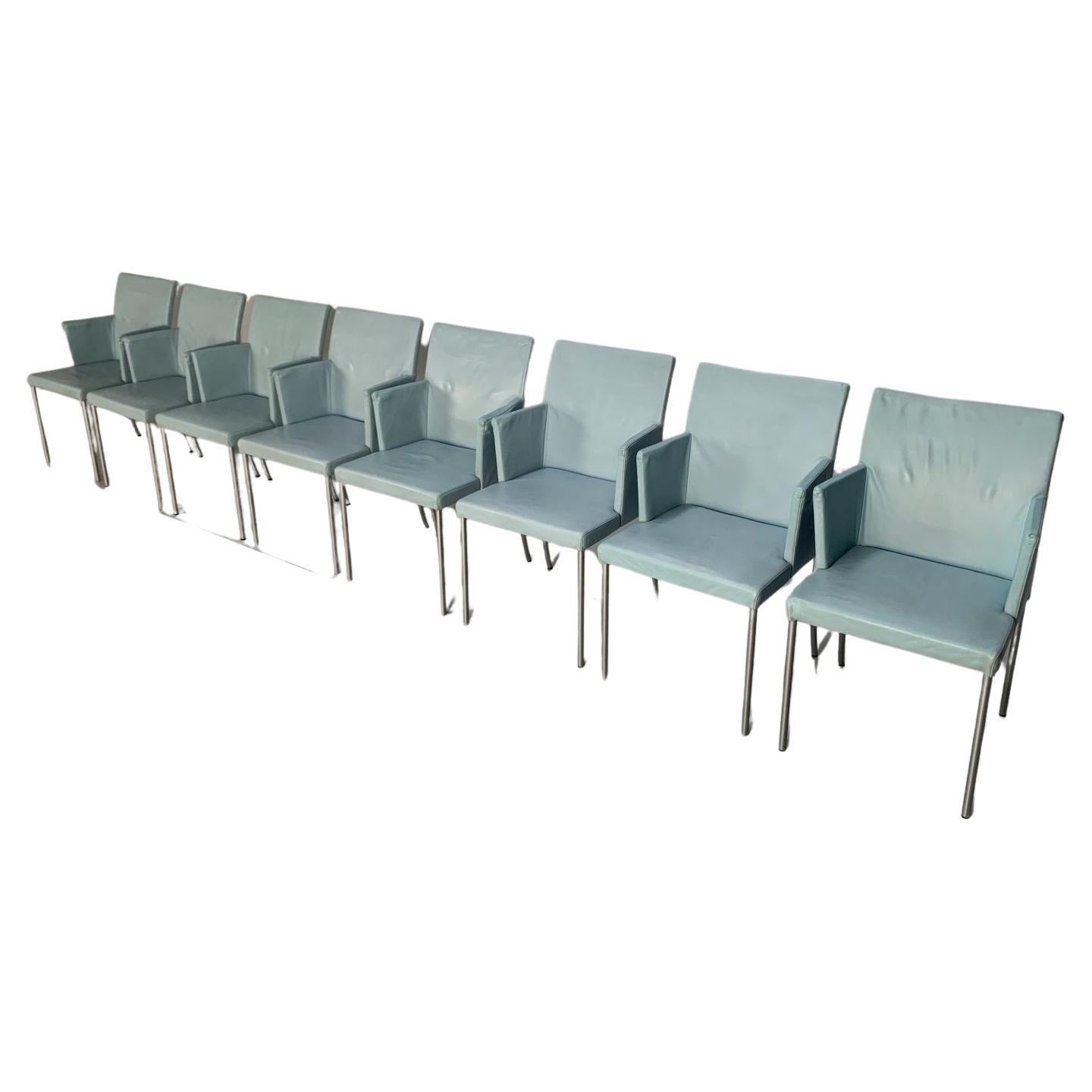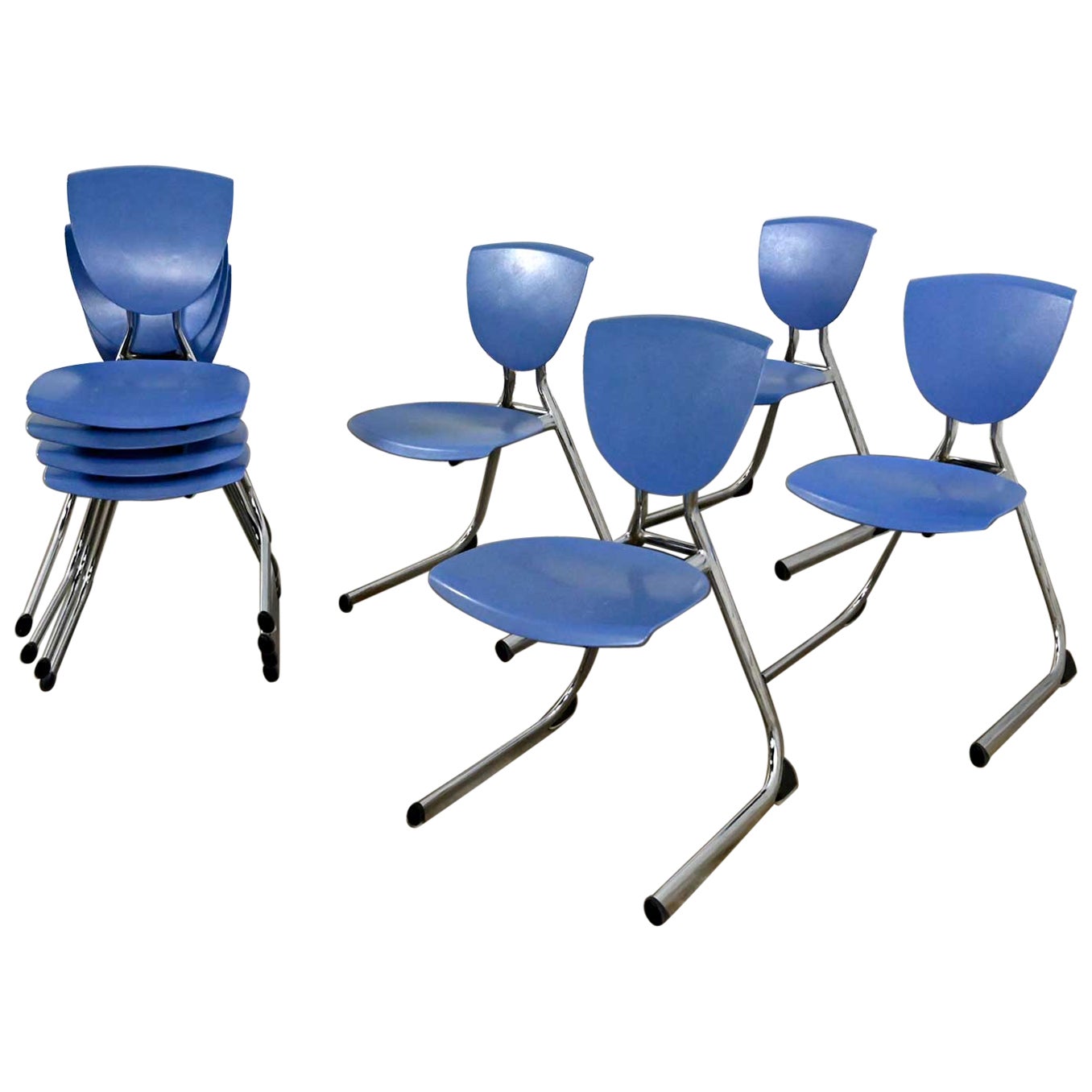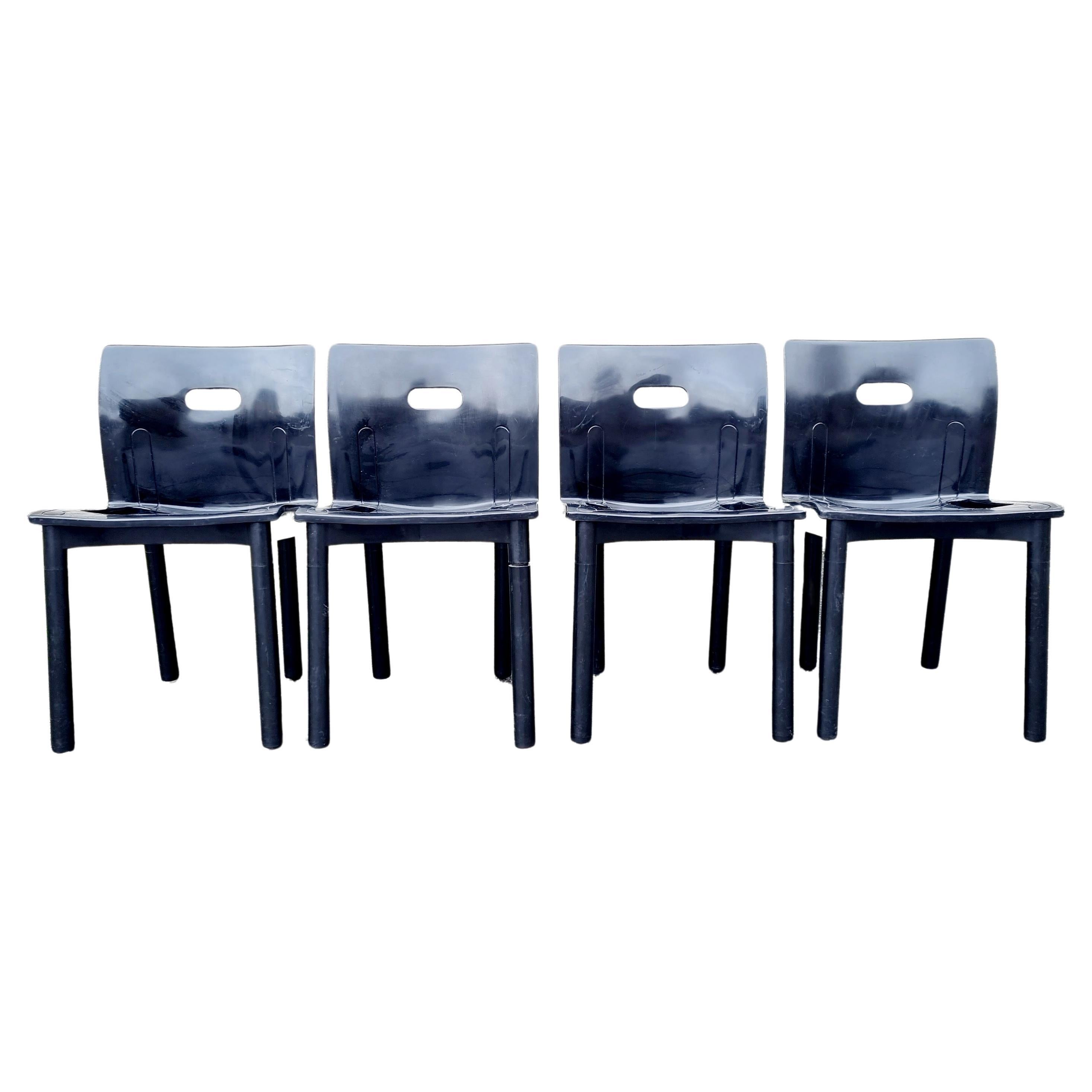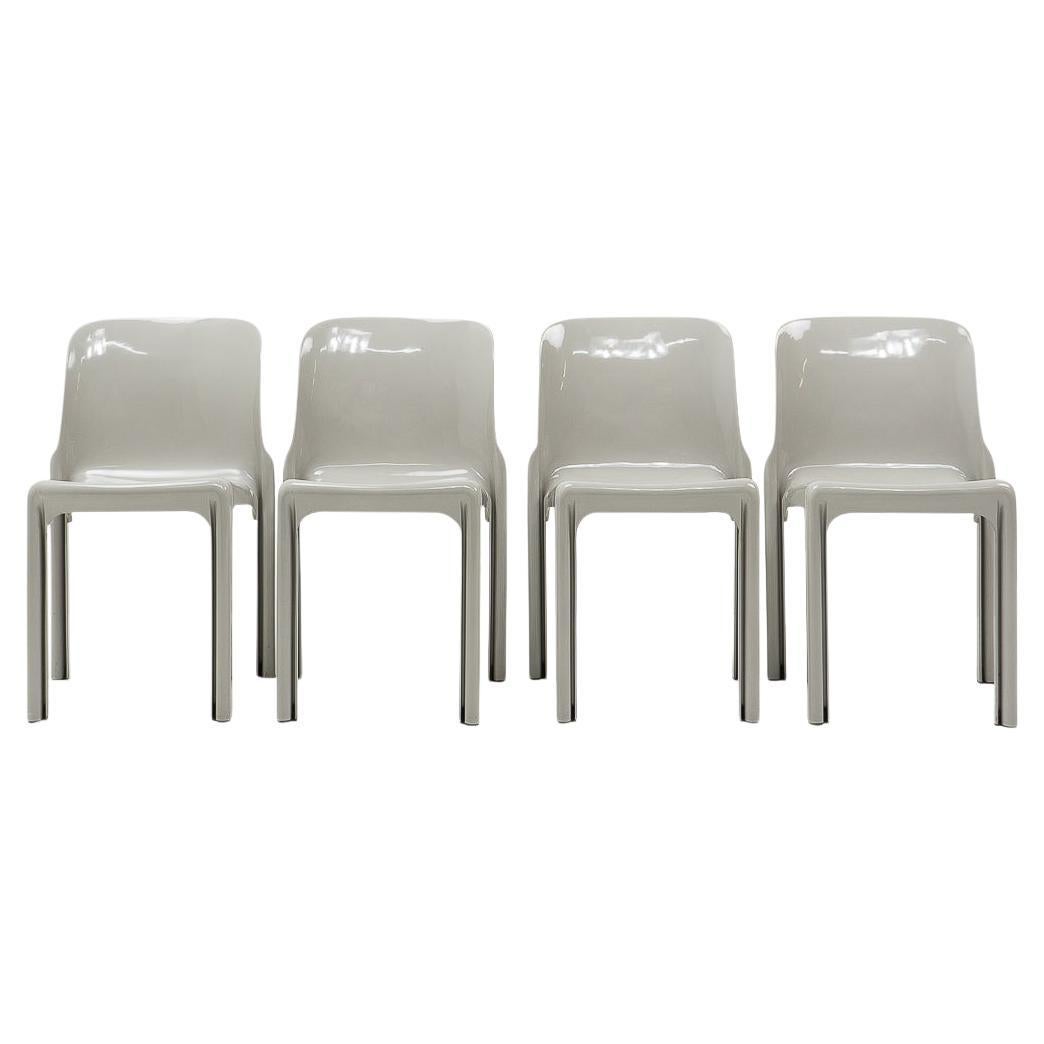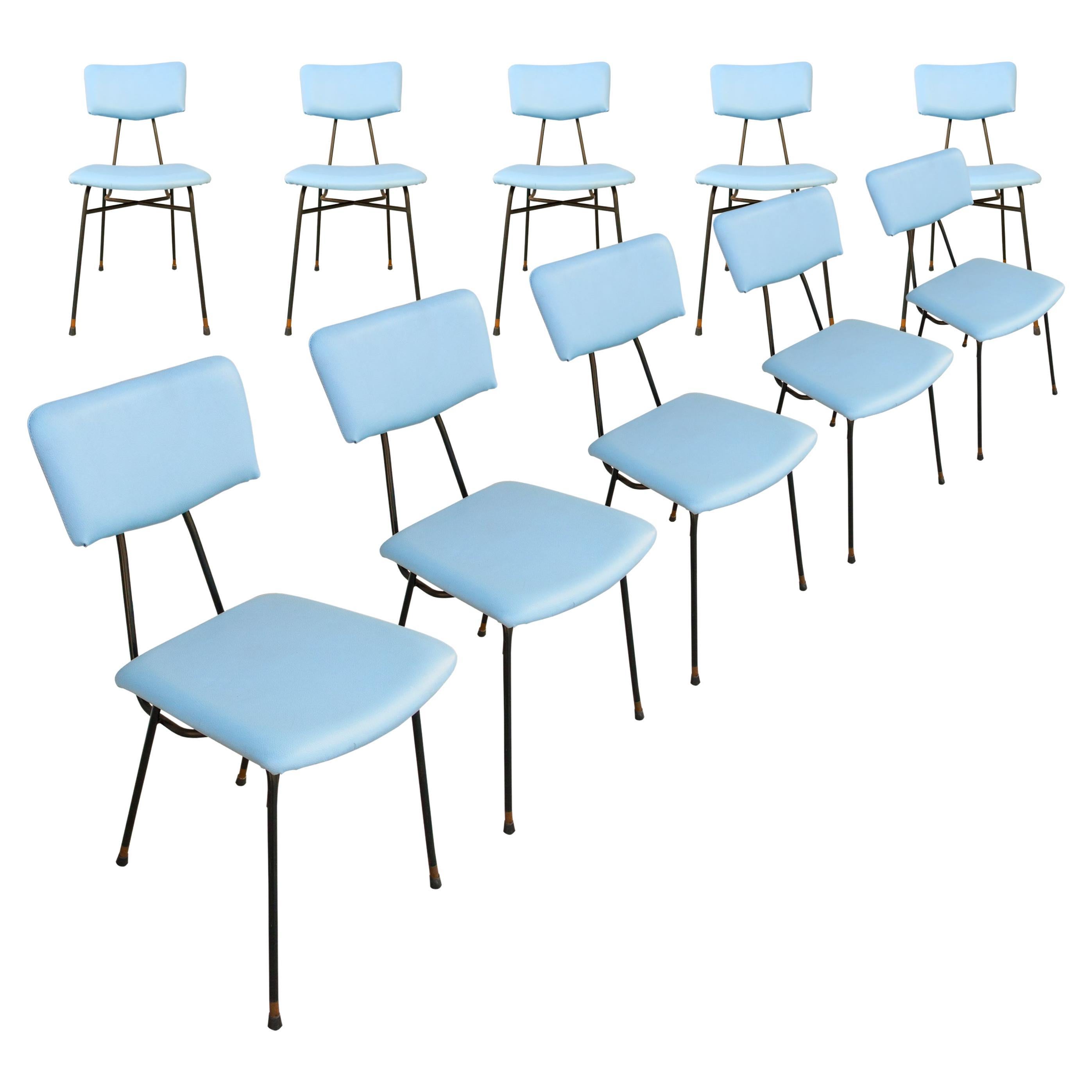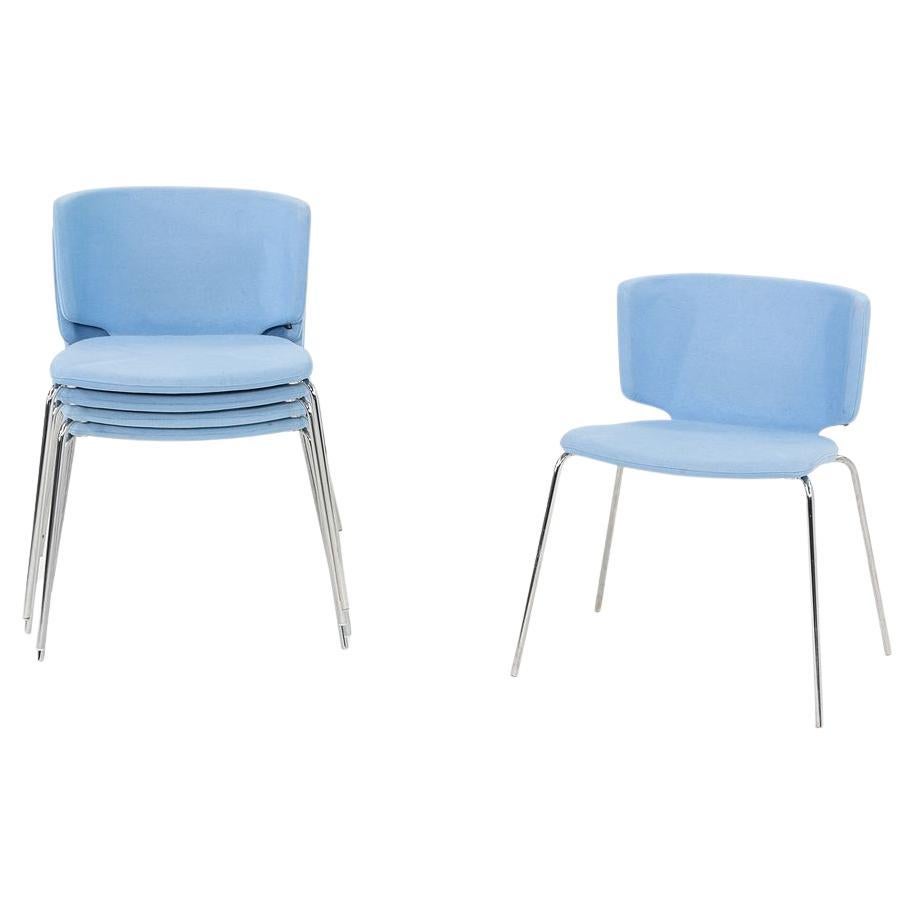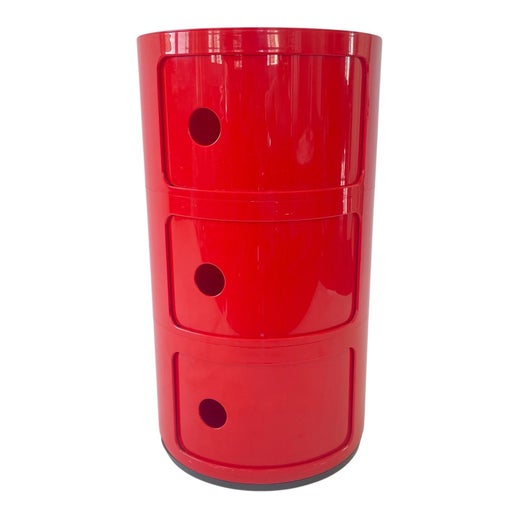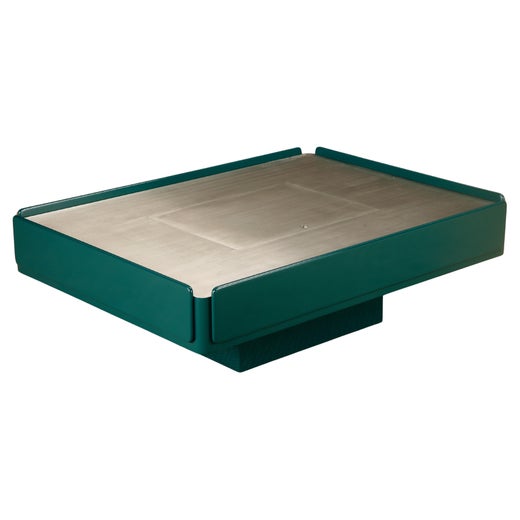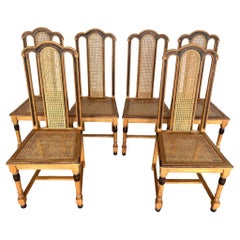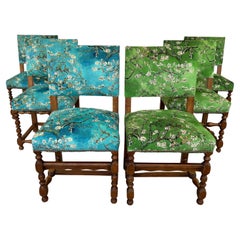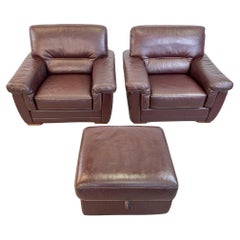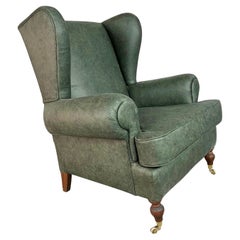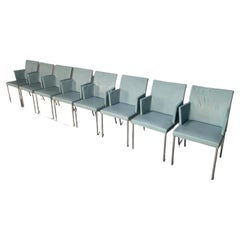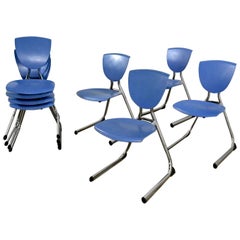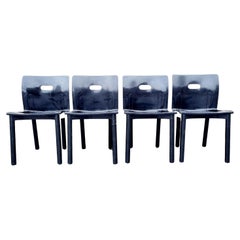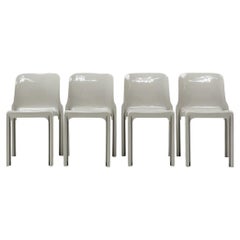Italian Maui Pale Blue Side Chairs Vico Magistretti for Kartell - Set of 12
About the Item
- Creator:Kartell (Designer),Vico Magistretti (Artist)
- Dimensions:Height: 30.2 in (76.71 cm)Width: 18 in (45.72 cm)Depth: 16.4 in (41.66 cm)Seat Height: 19.5 in (49.53 cm)
- Sold As:Set of 12
- Style:Industrial (In the Style Of)
- Materials and Techniques:
- Place of Origin:
- Period:1980-1989
- Date of Manufacture:1980
- Condition:Wear consistent with age and use. Vintage condition corresponding with age. Some visible wear and scratches on the seat/back and feet of some chairs as seen in the last two photos. Please observe pictures carefully.
- Seller Location:Bridgeport, CT
- Reference Number:Seller: B-4631stDibs: LU8824236688222
Kartell
The Italian design giant Kartell transformed plastic from the stuff of humble household goods into a staple of luxury design in the 1960s. Founded in Milan by Italian chemical engineer Giulio Castelli (1920–2006) and his wife Anna Ferrieri (1918–2006), Kartell began as an industrial design firm, producing useful items like ski racks for automobiles and laboratory equipment designed to replace breakable glass with sturdy plastic. Even as companies like Olivetti and Vespa were making Italian design popular in the 1950s, typewriters and scooters were relatively costly, and Castelli and Ferrieri wanted to provide Italian consumers with affordable, stylish goods.
They launched a housewares division of Kartell in 1953, making lighting fixtures and kitchen tools and accessories from colorful molded plastic. Consumers in the postwar era were initially skeptical of plastic goods, but their affordability and infinite range of styles and hues eventually won devotees. Tupperware parties in the United States made plastic storage containers ubiquitous in postwar homes, and Kartell’s ingenious designs for juicers, dustpans, and dish racks conquered Europe. Kartell designer Gino Colombini was responsible for many of these early products, and his design for the KS 1146 Bucket won the Compasso d’Oro prize in 1955.
Buoyed by its success in the home goods market, Kartell introduced its Habitat division in 1963. Designers Marco Zanuso and Richard Sapper created the K1340 (later called the K 4999) children’s chair that year, and families enjoyed their bright colors and light weight, which made them easy for kids to pick up and move. In 1965, Joe Colombo (1924–78) created one of Kartell’s few pieces of non-plastic furniture, the 4801 chair, which sits low to the ground and comprised of just three curved pieces of plywood. (In 2012, Kartell reissued the chair in plastic.) Colombo followed up on the success of the 4801 with the iconic 4867 Universal Chair in 1967, which, like Verner Panton’s S chair, is made from a single piece of plastic. The colorful, stackable injection-molded chair was an instant classic. That same year, Kartell introduced Colombo’s KD27 table lamp. Ferrierei’s cylindrical 4966 Componibili storage module debuted in 1969.
Kartell achieved international recognition for its innovative work in 1972, when a landmark exhibition curated by Emilio Ambasz called “Italy: The New Domestic Landscape” opened at New York’s Museum of Modern Art. That show introduced American audiences to the work of designers such as Gaetano Pesce; Ettore Sottsass, founder of the Memphis Group; and the firms Archizoom and Superstudio (both firms were among Italy's Radical design groups) — all of whom were using wit, humor and unorthodox materials to create a bracingly original interior aesthetic.
Castelli and Ferrieri sold Kartell to Claudio Luti, their son-in-law, in 1988, and since then, Luti has expanded the company’s roster of designers.
Kartell produced Ron Arad’s Bookworm wall shelf in 1994, and Philippe Starck’s La Marie chair in 1998. More recently, Kartell has collaborated with the Japanese collective Nendo, Spanish architect Patricia Urquiola and glass designer Tokujin Yoshioka, among many others. Kartell classics can be found in museums around the world, including MoMA, the Victoria and Albert Museum and the Cooper Hewitt, Smithsonian Design Museum. In 1999, Claudio Luti established the Museo Kartell to tell the company’s story, through key objects from its innovative and colorful history.
Find vintage Kartell tables, seating, table lamps and other furniture on 1stDibs.
Vico Magistretti
As one of the founding fathers of modern Italian design, prolific architect and industrial designer Ludovico Magistretti (known by his nickname Vico) was guided by his philosophy, “There is no excuse for bad design.” His architectural projects are widely revered, and an ingenious meld of form and function can be found in his stylish and deceptively simple table lamps, sofas, armchairs and other mid-century furnishings.
Born in Milan, Magistretti followed in the footsteps of his father and grandfather (both architects) to study architecture at the Polytechnic University of Milan. At the outbreak of World War II, he fled to Switzerland, and it was there he met his role model and mentor, renowned humanist architect Ernesto Nathan Rogers. Magistretti was inspired by Rogers’s vision to revive postwar Italy, and they collaborated on several reconstruction projects. Among Magistretti’s first architectural designs is a “poetic” round church, which he created for the QT8, an experimental Milanese neighborhood.
When Magistretti returned to Milan in 1945, he worked at his father’s architectural firm. It wasn’t until the early 1950s that he expanded his talents into design while working with furniture artisans.
In the 1960s, Magistretti began his 30-year working relationship with famed entrepreneur Cesare Cassina of the Cassina furniture manufacturing company. In their design approach, the two men shared a vision of the relationship between modernity and tradition and enjoyed a close bond (Magistretti designed Cassina’s luxurious villa in 1965). However, their friendship was not without contention.
Legend has it that upon seeing the prototype for Magistretti’s Maralunga sofa, Cassina hated it so much that he punched it, breaking the back of the sofa, which crumpled into itself.
“Right, great, it looks perfect to me like that,” an unfazed Magistretti allegedly responded, and the Maralunga’s slumped, adjustable-height backrest was born. Incidentally, the Maralunga sofa won Italy’s Compasso d’Oro award as did his Eclisse lamp for Artemide and his Atollo lamp for Oluce.
Magistretti died in 2006, but his designs live on in galleries, museums and private residences and offices around the world.
Find a range of vintage Vico Magistretti furniture and lighting on 1stDibs.
- ShippingRetrieving quote...Shipping from: Bridgeport, CT
- Return Policy
More From This Seller
View AllMid-20th Century French Dining Room Chairs
Cane, Oak
Mid-20th Century French Louis XIII Dining Room Chairs
Fabric, Wood
Mid-20th Century Dutch Mid-Century Modern Lounge Chairs
Leather
Mid-20th Century Dutch Mid-Century Modern Wingback Chairs
Faux Leather
Antique Early 19th Century Belgian Louis XIII Side Chairs
Upholstery, Walnut
Mid-20th Century Italian Mid-Century Modern Coffee and Cocktail Tables
Faux Bamboo, Rattan, Glass
You May Also Like
2010s Dining Room Chairs
Leather
21st Century and Contemporary Unknown Modern Dining Room Chairs
Chrome
Vintage 1980s Italian Mid-Century Modern Dining Room Chairs
Plastic
Vintage 1960s Italian Mid-Century Modern Side Chairs
Fiberglass
Vintage 1950s Italian Mid-Century Modern Chairs
Iron
2010s American Modern Side Chairs
Steel, Chrome
